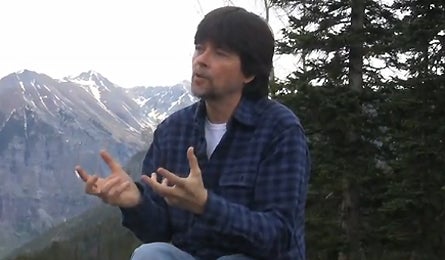Watch It, Hike It: An Episode-by-Episode Guide to The National Parks: America's Best Idea by Ken Burns

'Ken Burns'
Episode One (airs 9/27) “The Scripture of Nature” (1851-1890)
Yosemite Valley was the world’s first wilderness park, entrusted to the state of California in 1867. John Muir arrived soon after and surfed avalanches, charged bears, scaled waterfalls–sans technical gear–and climbed Sierra summits with nails punched through his shoes for traction. Later, Congress saw ample reason to set aside Yellowstone, too, but made it a national park, since Wyoming hadn’t yet achieved statehood.
Hike It
Admire Yosemite Valley on this eight-mile out-and-back from Rockslides trailhead to Rainbow View, a blown-open panorama of natural wonders–El Capitan, Half Dome, and Bridalveil Falls–and no development. backpacker.com/hikes/368705
Episode Two (9/28) “The Last Refuge” (1890-1915)
Severed buffalo heads and acres of stumps: A raw scene of destruction opens this episode, emphasizing the devastation that stirred President Theodore Roosevelt to protect more of America’s wildlands. In 1903, he spent two weeks in Yellowstone, home to the last herd of wild buffalo, hiking up to 18 miles a day, lunching on hardtack and sardines. Then he hit the Grand Canyon and Yosemite, where he camped with Muir beneath the sequoias. After his return to Washington, Congress passed the Antiquities Act, empowering him to create Devils Tower, Chaco Canyon, and–despite local protest–Grand Canyon National Monuments.
Hike It
Follow a bison migration route used by the only direct descendents of America’s great herds on this 21-miler across Yellowstone’s Central Plateau. backpacker.com/hikes/53486
Episode Three (9/29) “The Empire of Grandeur” (1915-1919)
To drum up support for parks, millionaire industrialist Stephen Mather (eventually the first director of the National Park Service) took fellow fat cats on a two-week trek through the Sierra. They dined on silver and china, slept on newly invented air mattresses, and sweated up 14,505-foot Mt. Whitney. They were so inspired that they cleaned up tin cans littering popular campsites–and supported proposals in Washington to establish Hawaii Volcanoes, Denali (then Mt. McKinley), and Grand Canyon National Parks.
Hike It
Scale the mountain that inspired more parks on the 12.4-mile Mountaineers Route. backpacker.com/hikes/483527
Episode Four (9/30) “Going Home” (1920-1933)
Road trip! When auto routes surpassed rail as the main travel access to the parks, visitation exploded. In the summer of 1921, Margaret and Edward Gehrke, of Lincoln, Nebraska, (and their Airedale terrier, Barney) drove across the country “collecting” national parks. They covered more than 7,000 miles, visiting 12 parks–including Rocky Mountain, Rainier, Yellowstone, and Glacier.
Hike It
Trek the 12.8 miles to Rocky Mountain National Park’s Crystal Lake from Lawn Lake trailhead, off Old Fall River Road (the first road to cross the northern Colorado Rockies), to experience “the freedom, the joy, the ecstasy” of these mountains as the Gehrkes did. backpacker.com/hikes/6953
Episode Five (10/1) “Great Nature” (1933-1945)
When NPS scout Frederick Law Olmsted, Jr. first visited the Everglades, he proclaimed the scenery “confused and monotonous.” Then he witnessed wave upon wave of ibis and herons roosting for the night, which thrilled him like nothing before. Olmsted’s superiors surveyed the area from the Goodyear blimp and won Congressional approval for park status, making it the first created specifically to preserve animals and plants.
Paddle It
Drift through mangrove tunnels and see manatee on this 18-mile course from Anglers Park to campsites on North Nest Key. backpacker.com/hikes/53737
Episode Six (10/2) “The Morning of Creation” (1946-1980)
Predator eradication programs wiped out wolf populations in the parks–except at Denali, where wildlife biologist Adolph Murie hiked 1,700 miles (in one season), gathering data and observing wolves for up to 33 hours at a stretch. As Murie restricted wolf killings, the sheep population grew, proving his theory that wolves strengthen herds by culling weak members, and convincing the NPS to protect the predatory species for the first time.
Hike It Trek through one of the wolves’ last outposts on this four-mile hike along Denali’s Savage River. backpacker.com/hikes/12334